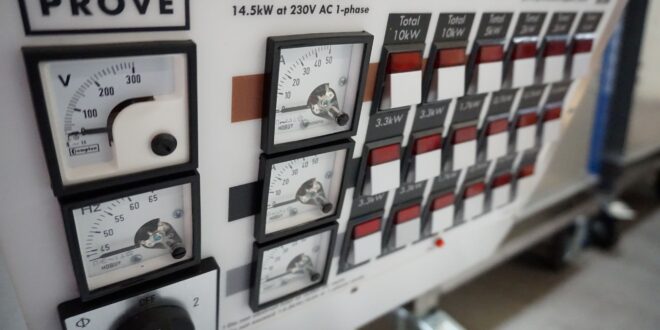What happens when generators fail? Andrew Keith explores the potential impacts of generator failures. He looks at the importance of load bank testing to ensure any issues with generators are identified before they’re needed in an emergency
Forth Valley Royal Hospital in Scotland experienced a blackout in January 2025 that affected its emergency and maternity sections. When mains power was lost, the hospital’s backup system was supposed to activate automatically. But the generator failed to start, cutting power to critical areas for 70 minutes.
Staff relied on torches and battery-powered screens to continue treating patients, while critical equipment had to be taken offline. NHS Forth Valley described the situation as ‘unacceptable’, and the incident is now under investigation.
Hospitals are built with multiple layers of protection to avoid this kind of failure. But when even one safeguard fails, the consequences can be severe not just for equipment, but for the people who depend on it.
Why hospitals rely on instant backup power
In a hospital, continuous power is not an option — it is a requirement. Life support systems, computer systems, theatre lights and refrigeration for medication all rely on stable, uninterrupted power.
To provide this, hospitals typically use a combination of diesel generators and uninterruptible power supplies (UPS). The UPS, usually battery-powered, kicks in instantly when mains power fails. In a matter of seconds, the diesel generator cuts in and continues to keep things going until mains power returns.
But even the most well-designed system won’t do any good if it has not been tested adequately. And that means more than switching it on occasionally.One of the most common reasons generators fail is a lack of proper load testing. Running a generator with no load won’t show you how it will perform under pressure. It needs to simulate real conditions: that’s where load banks come in.
A load bank places a controlled electrical load on the generator, simulating what would happen during an actual outage. Importantly, this testing does not interfere with the building’s live power.
The tests uncover hidden issues, such as deteriorated fuel, dead batteries, overheating, or failing controls that might otherwise remain undetected.
Fixed versus portable load banks
Load banks usually come in two types: fixed and portable, each designed for different requirements of testing.
Fixed load banks are installed permanently with the generator system and can be set to perform routine and automated testing. Since they are part of the hospital’s infrastructure, they offer constant monitoring with little interruption.
Portable load banks are convenient and used for intermittent checkups or in less demanding applications. While flexible, they generally do not offer the same level of consistent readiness or reliability as fixed systems. For hospital and other mission-critical sites where operation continuity is a top priority, fixed load banks are options available for regular, continuous testing that ensures backup power will be available when needed most.
Be ready before the lights go out
The blackout at Forth Valley Royal Hospital did not cost lives, but it could have. For critical infrastructure, it’s a powerful reminder that just having backup power is not enough. You must know it will work.
Load bank testing needs to be a core part of every facility’s maintenance schedule. With the right equipment and a consistent routine, power loss does not have to turn into a crisis.
By implementing robust testing systems and carrying out regular, real-world checks, facilities can cut risk, protect vital services and prevent avoidable failures. That reduces downtime and improves maintenance.
Blackouts like Forth Valley are rare, but they’re a sharp reminder: it’s always better to be prepared than left in the dark.
Andrew Keith, division director of Power Prove.
 Engineer News Network The ultimate online news and information resource for today’s engineer
Engineer News Network The ultimate online news and information resource for today’s engineer


